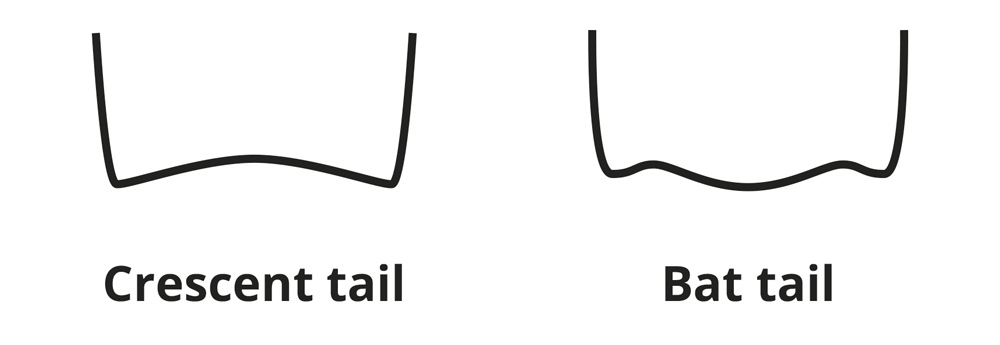Purchasing a Bodyboard

When you're prepared to purchase a bodyboard, several crucial elements demand consideration. Below is a neatly organised guide highlighting the most important aspects to assess.
1. Selecting the Core
The core is essentially the fundamental material forming the body of your board. It comprises foam material available in three variations - ESP, PE, and PP. Each type possesses distinct attributes relating to water temperature, wave size, the dimensions and skill level of the rider, etc. A brief comparison of the three varieties is provided below.
ESP - Expanded Polystyrene
- Facilitates diverse shapes, designs, and unique flex formations
- Offers ample cushioning for elbows and hips
- More affordable than PE and PP
- Ideal for newcomers
- Outstanding buoyancy and lightweight
- Less robust than PE and PP, so aim for approximately 50-55 mm thickness for additional strength
PE - Polyethylene
- The classic and most preferred bodyboard core
- Provides almost immediate feedback to the rider through its flex
- Permits enhanced control
- Superior performance in cool water
- Suitable for larger waves
PP - Polypropylene
- Remarkable all-purpose board
- More rigid than PE yet lightweight and sturdier
- Fully waterproof
- Excels in warm waters and conditions
- Ideal for big waves and more intricate manoeuvres
- Beaded PP enhances flex and buoyancy
- Extruded PP boosts rigidity and speed
Flex indicates how much the board bends under external forces (e.g., waves) and subsequently rebounds. Boards with more flex are more responsive to water conditions. Conversely, boards with less flex are stiffer but quicker.
2. Picking the Slicks (Skins)
The slicks, also termed skins, cover the underside of the board, the part in direct contact with water. Choose between Surlyn Slicks and HDPE Slicks:
- HDPE Slicks: High-density polyethylene slicks are durable materials with low resistance, thereby increasing speed. HDPE is generally the more affordable choice than Surlyn and is widely used in beginner boards.
- Surlyn Slicks: These provide a rubber-like surface offering optimal responsiveness and flexibility, as they can revert to their original form after pressure. This option is most favoured by bodyboarders. Although more expensive than HDPE, Surlyn delivers superior performance.
3. Choosing the Deck
Your board's upper section, known as the deck, is where you lay as you surf. Options include PE, XPE, and IXPE decks. Here's a quick comparison:
PE - Polyethylene
- Excellent cushioning for the rider
- Dents form effortlessly as it doesn't return to its initial shape
- Soft and pliable
XPE - Cross-linked, Cross-cell
- Highly water-resistant due to its closed structure
- Sleek appearance but necessitates additional wax for grip
- Stiffer feel than PE and IXPE
IXPE - Cross-linked, Open-cell
- Minimises impact on the board's flex and rebound
- Extra rigidity and strength due to its higher density
- Softer than XPE, providing a rougher texture for better traction
The deck you select often boils down to personal preference and riding style—whether a softer feel, more refined appearance, or longer-lasting deck appeals to you.
4. Selecting the Tail Shape
Bodyboards typically feature two primary tail shapes, each with various adaptations. Both suit all rider levels, depending largely on your preferences and the conditions you navigate.

- Crescent Tail: An excellent choice for a range of conditions. It offers firm grip on waves, making it easier for riders to position their hips for catching waves or paddling.
- Bat Tail: Better for weaker surf conditions or erratic waves due to its enhanced flotation. It is especially beneficial for heavier riders. The added buoyancy aids in speed gain, though it may yield a looser feel at the board's rear.
5. Sizing Up
Choosing the correct board size is vital for bodyboarding. Your height aside, the size also hinges on the type of waves you'll tackle. Larger waves require the control and manoeuvrability of a smaller board, while bigger boards ensure useful flotation in weaker conditions.
Nevertheless, it's essential that the board suits your height and weight. A board too long will cause your knees to hit the tail while paddling with fins. Conversely, one that's too short won't provide adequate flotation. Adjusting buoyancy without altering board length can be achieved by opting for a wider or narrower board.
To identify the board size you need, measure:
- The distance from the ground up to your belly button;
- The space between your chin and knees;
These figures aren't necessarily identical but should be close, providing a sound indication of a suitable board length.
6. Not to Be Overlooked - Fins/Flippers
Fins or flippers are indispensable for bodyboarding. Unlike regular swimming fins, bodyboarding fins are designed to be shorter, broader, and stiffer, allowing swift acceleration to catch waves and manoeuvre without hindrance.
Diverse options exist, concerning materials and shapes, but the essential factor is to obtain bodyboard-specific fins that comfort and fit your feet well.
Ready to Hit the Waves!
Now that you're equipped with the fundamental knowledge necessary before purchasing your board, go ahead and choose the perfect one for you. Questions and further information will always arise, so if unsure, feel free to contact us.
